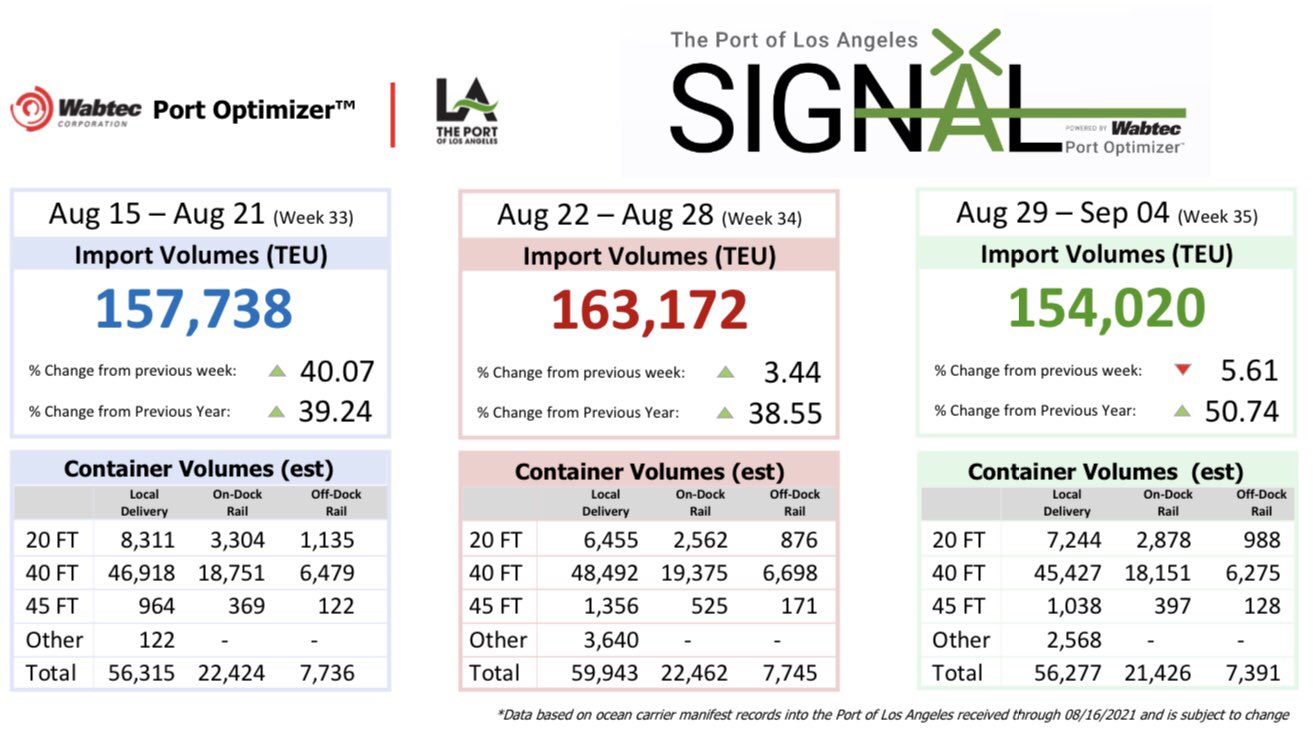 View Winners →
View Winners → 
Photo courtesy of Corey Seeman/Flickr
The Port of Los Angeles experienced its lowest amount of exports since 2005 last month, but the port hit its 12th consecutive month of growth in overall cargo volume due to a historic import surge during the COVID-19 pandemic.
The port attributes the decrease in exports to China’s retaliatory tariffs on U.S. goods and the high value of the U.S. dollar.
“July (export) numbers were even worse than last month, down to just 91,000 TEUs, that’s a drop of 28% year-on-year and the lowest export number we’ve seen in Los Angeles since 2005,” the port’s Executive Director Gene Seroka said.
He added that imports have declined during 29 of the last 33 months.
The port processed 4% more twenty-foot equivalent units in July compared to the previous July.

“This remarkable, sustained import surge is pushing the supply chain to new levels,” Seroka said. “Credit goes to our longshore workers and terminal operators for helping the Port of Los Angeles achieve an average of more than 11,000 TEUs exchanged on each vessel call, the best in the business.”
For the first seven months of 2021, overall cargo volume has increased 36.8% from the same period in 2020, reaching 6,318,675 units moved so far.
Last month, the port moved 890,800 twenty-foot equivalent units, 469,361 of which were imports, a 2.9% increase from the previous year.
“With space tight at warehouses, rail yards and container terminals as we enter the traditional `peak’ shipping season, we are offering new data tools and incentives to help improve throughput and efficiencies. Additional strategies are being developed in conjunction with both the private sector and federal government,” Seroka said.




































































































